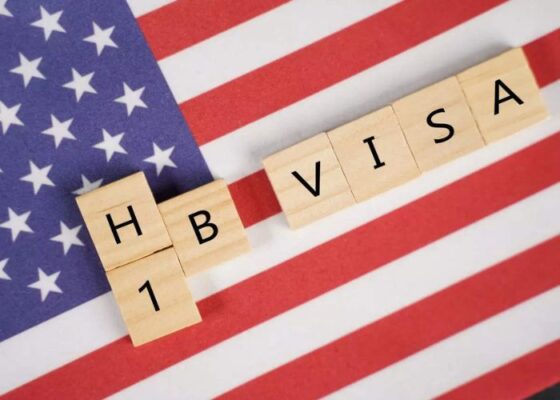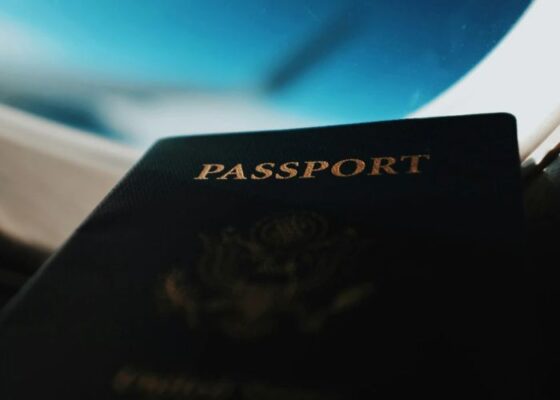
The H-1B visa program has been around for a long time and has helped many highly skilled foreign workers, mostly in tech and IT, come to the United States to live and work. Over 70% of H-1B visa users in recent years have been Indian citizens. This has been the case for a long time. Read below about “The H-1B Visa Crisis- How Indian Tech Workers Are Fighting to Stay in the US”.
The H-1B program, on the other hand, has been closely watched and criticized lately. Tens of thousands of Indian tech workers are stuck because the Trump administration’s strict policies and crackdowns on immigration caused a huge drop in H-1B visa applications.
As an immigration lawyer who has helped clients get through the complicated US visa system for over seven years, I’ve seen firsthand how hard it is for the Indian community as the number of H-1B rejections has increased. People who have built lives in the United States may have to leave and move back to India. For people who work in tech, this could mean job loss or career changes.
I’m going to talk about the H-1B visa crisis from the point of view of Indian tech workers and the creative ways they are trying to stay in the US in this piece.
Table of Contents
The H-1B Visa: A Primer

The H-1B visa program lets US companies hire temporary foreign workers for specialized jobs that need technical or theoretical knowledge. IT, engineering, accounting, design, and medicine all need H-1B workers to fill in the gaps in their skill sets.
Employers must fill out a Labor Condition Application and send it to the Department of Labor, stating that hiring the foreign worker will not hurt US workers. If accepted, the employer can then ask USCIS to issue an H-1B visa for the worker.
H-1B visas are good for three years and can be extended for three more years. The program can only give out 85,000 new visas each fiscal year. However, nonprofits and educational organizations are not counted toward this limit.
The Tech Industry’s Reliance on H-1Bs
The US tech industry has long relied on the H-1B program to bring in the best workers from other countries, especially in areas where there aren’t enough workers in the US to meet demand. Almost 70% of people who have an H-1B work in areas related to computers.
A lot of H-1B workers are employed by big US tech companies like Apple, Microsoft, Google, Amazon, Intel, and Microsoft. H-1Bs are also very important for smaller startups, IT services, and consulting businesses to stay competitive.
For many years, most people who got H-1B visas were Indian citizens. In FY 2021, more than 67% of H-1B petitions that were accepted went to Indian citizens. Tech companies in the US were very interested in hiring them because they had very advanced technology skills.
The Trouble with H-1Bs Under Trump
Some people first spoke out against the H-1B program when Donald Trump was president. In line with his “Buy American, Hire American” plan, the government changed a number of rules to target the H-1B program.
When the “Hire American” presidential order was signed in 2017, it told government agencies to crack down on fraud and abuse in guest worker programs. USCIS started to look more closely at H-1B applications and sent out burdensome Requests for Evidence (RFEs) that slowed down the working times.
The 2020 H-1B lottery was another blow because it changed from a random drawing to a drawing based on wages. Petitions that ask for bigger salaries would have a better chance of being chosen. This hurt Indian IT companies that usually paid less because they had to pay workers less.
Because of this, the number of H-1B denials went from 6% in FY 2015 to 24% in FY 2019. There was a huge drop in the number of H-1B visas granted by the USCIS, from almost 130,000 in FY 2015 to only 67,000 in FY 2021.
What It Means for Indian Tech Workers
The H-1B situation has been nothing short of terrible for Indian tech workers. A lot of them have lived and worked legally in the US for years, but all of a sudden they lost their H-1B status and will have to leave the country.
Some have had to go back to India on their own, leaving behind jobs and families in the US. There have been layoffs, job losses, and lives turned upside down. It’s hard for many people to find work in India after being away from the job market there for a long time.
People who still have their H-1B status are always afraid they will lose it. RFEs and visa rejections have made people in the community more anxious. As the US government continues to crack down, workers feel like they are being singled out and made fun of.
At the same time, the wait times for permanent residency keep getting longer, putting H-1B holders in immigration limbo. For Indian citizens, the wait time for a green card is over 10 years long in many areas.
How Indian Workers Are Fighting Back
The Indian tech community has come together and come up with creative ways to fight the H-1B crackdown as the situation gets worse.
Lawsuits & Advocacy
Indian workers have sued H-1B rules and denials they say are illegal. Lobbying groups like Immigration Voice ask Congress to make changes, such as getting rid of caps on the number of green cards each country can issue. Tech business groups also want the annual H-1B cap to be raised.
Work From Home
As a short-term fix, a lot of H-1B tech workers are working from home. People with H-1B visas are only allowed to work for one company, so they can keep their jobs and status by working from India for US companies.
Finding Different Visas
Some people have been able to get visas in other ways, such as through the L-1 intracompany transfer visa. This lets workers temporarily move to an office of the same company abroad.
Others have gotten O-1 visas by claiming to be people with “extraordinary ability.” The O-1 doesn’t have a cap, but you have to meet very high standards.
Looking Into Other Countries
Canada, Australia, Germany, and other places are open to tech workers who come from other countries. Indian workers and students are looking for jobs in countries that are friendlier to immigrants more and more.
Policy Changes
There was already talk of going back to the old H-1B lottery system under the Biden government, which was in charge before Trump’s “Hire American” order. But bigger changes are still needed to make the changes last.
A Long Battle Ahead
Even though they work hard, Indian tech workers have a hard time because the US still has strict visa rules. But the community keeps coming up with new ways to adapt while pushing for real changes to H-1B and green card laws.
Tens of thousands of Indian families have made the US their home. The risks are very high for them. Their work is very important for keeping the US competitive. The H-1B visa can once again be a bridge instead of a wall if immigration policies are smart and kind. I hope you like reading “The H-1B Visa Crisis- How Indian Tech Workers Are Fighting to Stay in the US”.

Visa Expert, Arun Yadav is an accomplished immigration lawyer specializing in Spouse Visas, Visa consultant, Study Visas, and low-budget fund advising all across the world. With a Master’s degree in Immigration Law and 8+ years extensive experience in the field, Arun has cultivated a reputation for excellence and reliability by helping 3000+ clients for Visa consultation. He is dedicated to bridging education opportunities and securing visas for his clients. Explore expert advice and immigration tips on his Instagram profile: @visaexpertarunyadav. Follow his insightful content and benefit from his professional guidance in navigating the complexities of immigration law and visa acquisition.




